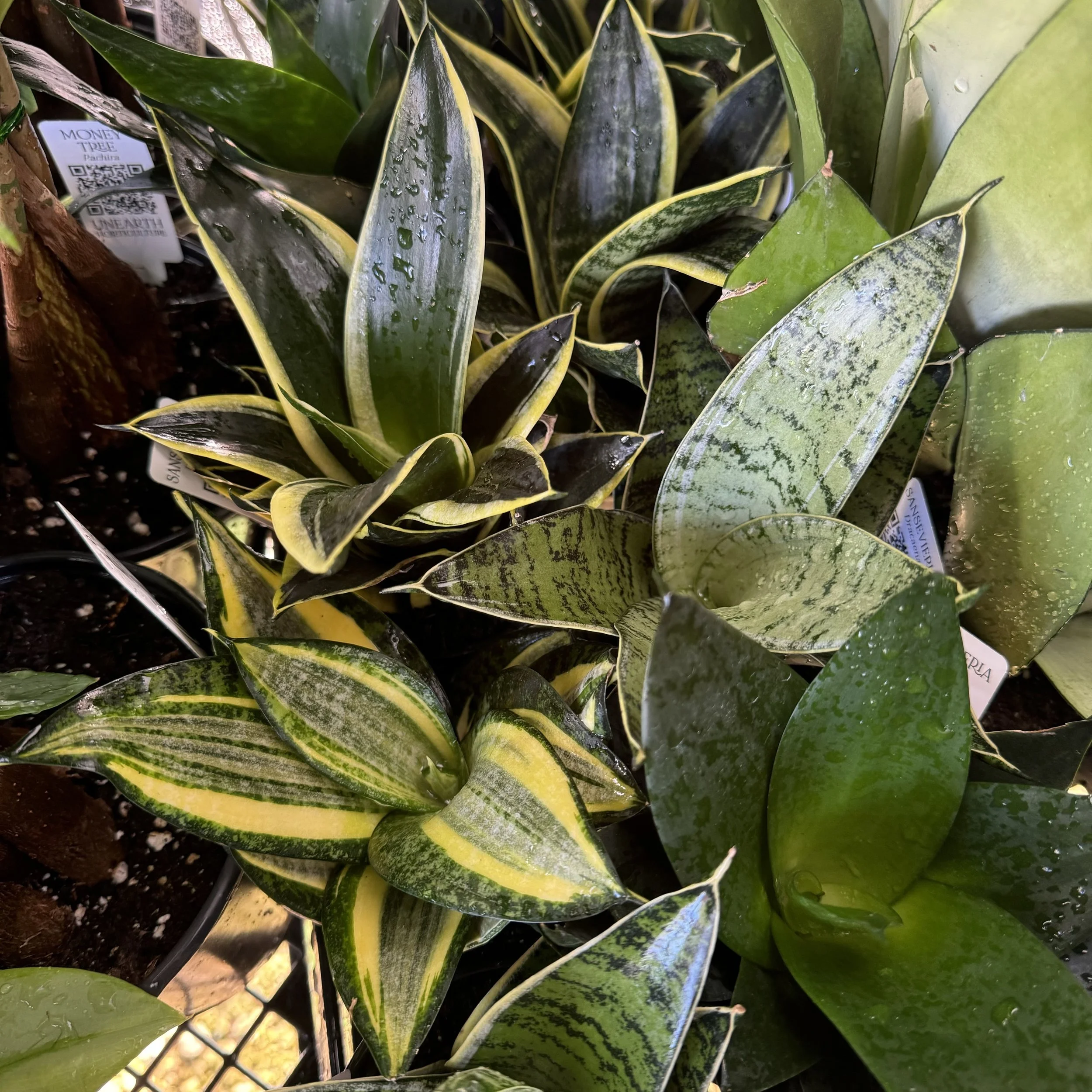SNAKE PLANT
Dracaena trifasciata (syn. Sansevieria)
Family Asparagaceae
-
Light: Sansevieria can handle most light levels except direct outdoor light.
Temperature: 60-90 F
Humidity: any areas
Like other tropical plants, sansevieria prefers humidity but can tolerate dry air well.
-
Water: Water only when the potting mix is mostly dry to avoid rot issues that are common amongst sansevieria plants.
Repotting: Repot every 2-3 years into a slightly larger container (1-2” increased diameter or depth). Use a general purpose potting mix. Be careful to avoid root bound plants in breakable pottery. Sansevieria are known to break pots with their spreading rhizomes.
Fertilizing: Either…
Water Application: Incorporate fertilizer into your watering cycle once per month March through September. Dilute an all purpose fertilizer (20-20-20) by half OR use your favorite fertilizer rated for houseplant use in your water.
Slow Release: Incorporate slow release fertilizer pellets into the top inch of potting soil every 6 months. Apply the rate indicated for indoor plants on the label. If no recommendation for houseplants is present, apply 1/4 to 1/2 the listed rate.
-
Asparagaceae has one obvious member, and it’s a favorite vegetable of many—asparagus! Did you know that the vegetable we consume is actually a flower spike? There are over 2500 genera in this family because of the common flower spike morphology. If you’ve ever seen a dracaena or spider plant flower, you’ll notice they look similar.
A word of caution—just because these houseplants are in the asparagus family, does not mean they are always edible.
-
(Listed in order of commonality…)
Root decay caused by overwatering
Fungus gnats
-
Is snake plant safe for pets?
Dracaena should not be ingested. A compound called saponin naturally occurs in dracaena and causes drooling, incoordination, vomiting and other problematic symptoms.
Cultivars & Species
Have a more specific question?
I’m just a few clicks away.












